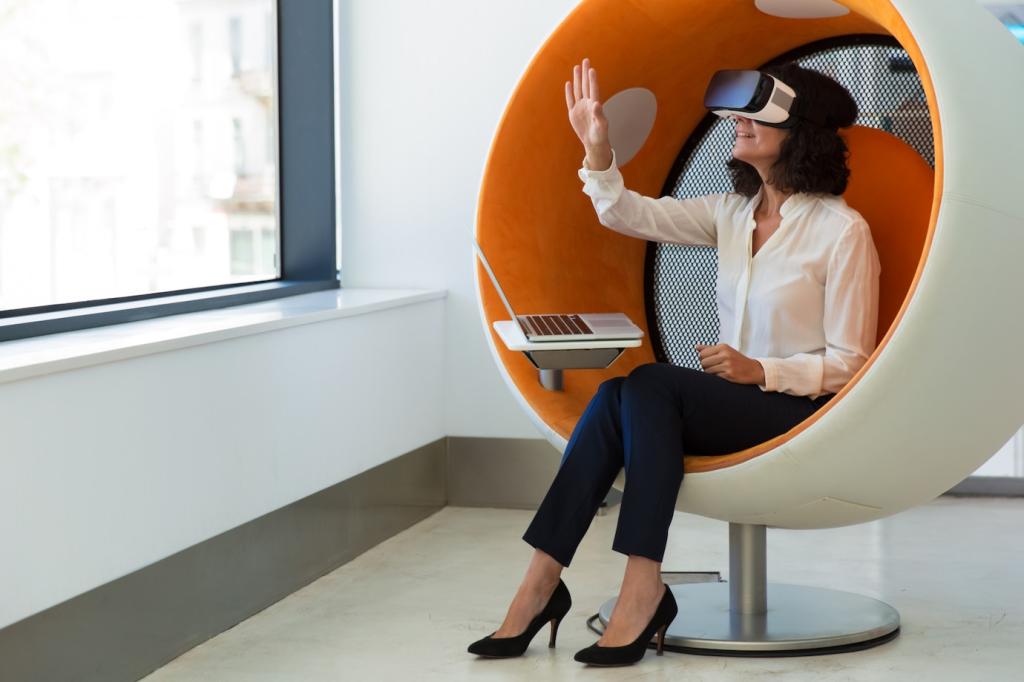User Experience Design in Virtual Worlds
Chosen theme: User Experience Design in Virtual Worlds. Step into a space where presence, play, and purpose meet. Together we’ll explore how to craft intuitive, inclusive, and emotionally resonant experiences across immersive environments. Enjoy, share your thoughts, and subscribe for future deep dives.
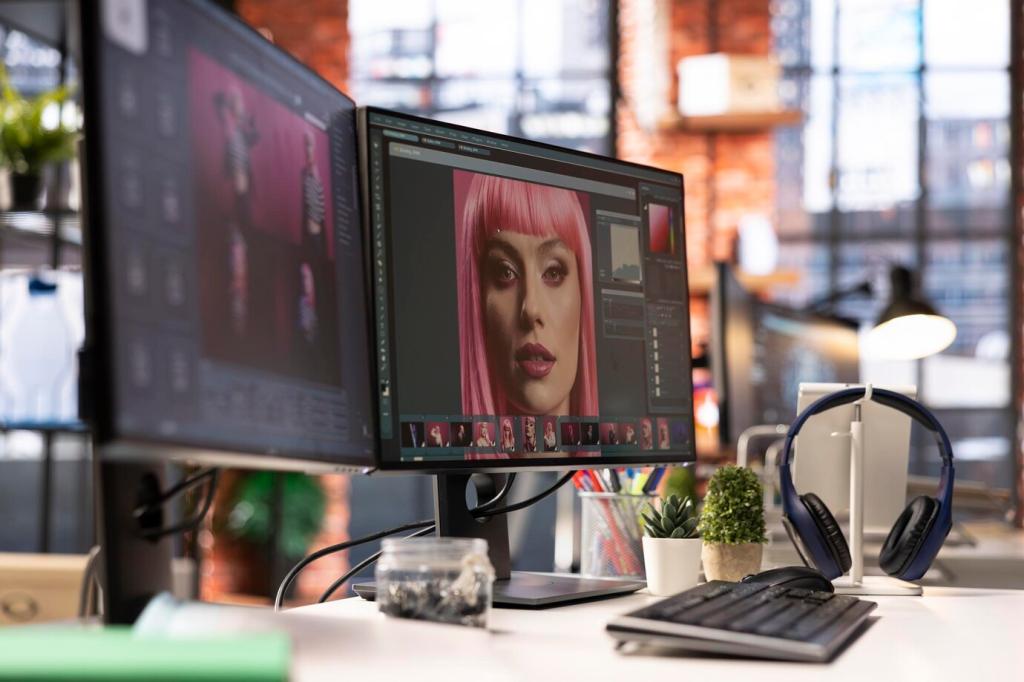
Designing for Presence
Presence thrives when scale feels right, latency stays low, and the world responds instantly. Calibrated interpupillary distance, accurate room lighting, and natural occlusion help the brain accept the illusion. Share the moment a tiny detail finally made your world feel real.
Clear Affordances in 3D Interfaces
In virtual worlds, affordances must be spatial and tactile. Grabbable objects need visible grip zones, believable weight, and subtle highlights. Diegetic panels should lean into context, like wrist-mounted menus. Comment with your go-to pattern for making interactions feel obvious yet magical.
Onboarding and Spatial Wayfinding
Gentle First Minutes
Start seated or stationary, give one clear action, then layer complexity. A single glowing object to pick up beats a menu lecture. Progressive hints fade as mastery grows. Ask for feedback prompts that celebrate small wins and invite continuing exploration.
Landmarks, Light, and Lines of Sight
Wayfinding improves with memorable landmarks, consistent lighting, and sightlines that reveal the next goal. Use color-coded districts, ambient audio beacons, and floor patterns that subtly guide feet. Tell us how you design a landmark users remember hours after leaving.
Diegetic Signage and Micro-Quests
Replace floating arrows with in-world cues: fluttering banners, wind chimes near doors, or NPCs pointing naturally. Micro-quests that lead around corners reduce cognitive load. What small, clever cue have you used to guide without breaking immersion or agency?
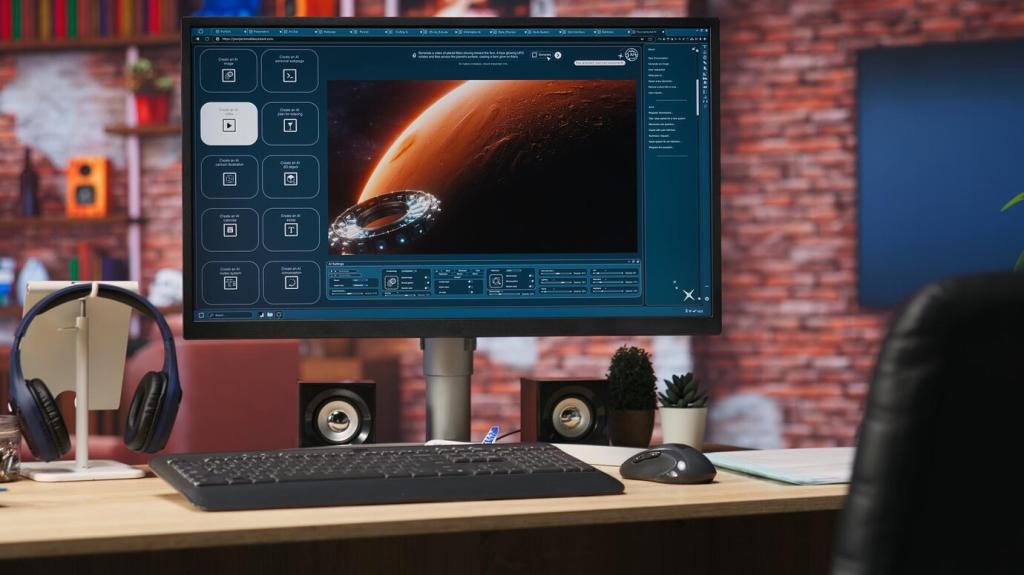
Hands, Controllers, and Natural Gestures
Support hand tracking and controllers with equal respect. Use pinch for precision, grab for power, and wrist-turns for quick menus. Provide gesture previews and cancel gestures gracefully. Invite users to calibrate reach and grip strength based on comfort and ability.
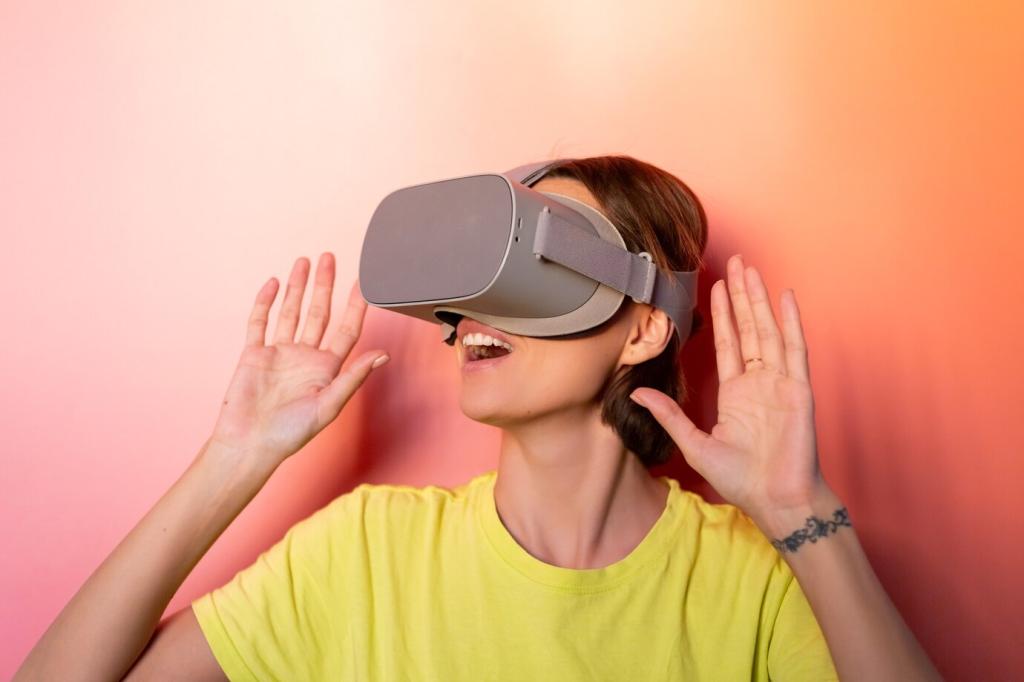
Haptics and Spatial Audio as Truth Signals
Tiny haptic pulses validate selection, fuller rumbles convey heavy impacts, and audio cones anchor objects in space. Layer earcons with environmental sound so cues never shout. What haptic plus audio combo made your interactions feel irresistibly tangible?

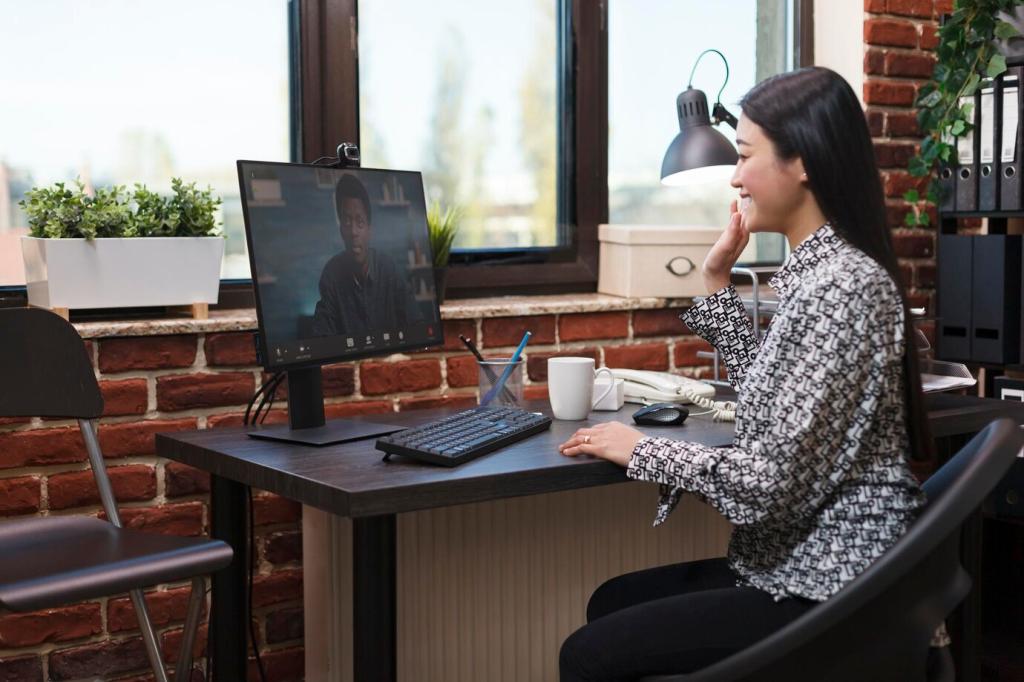

Accessibility and Comfort for Everyone
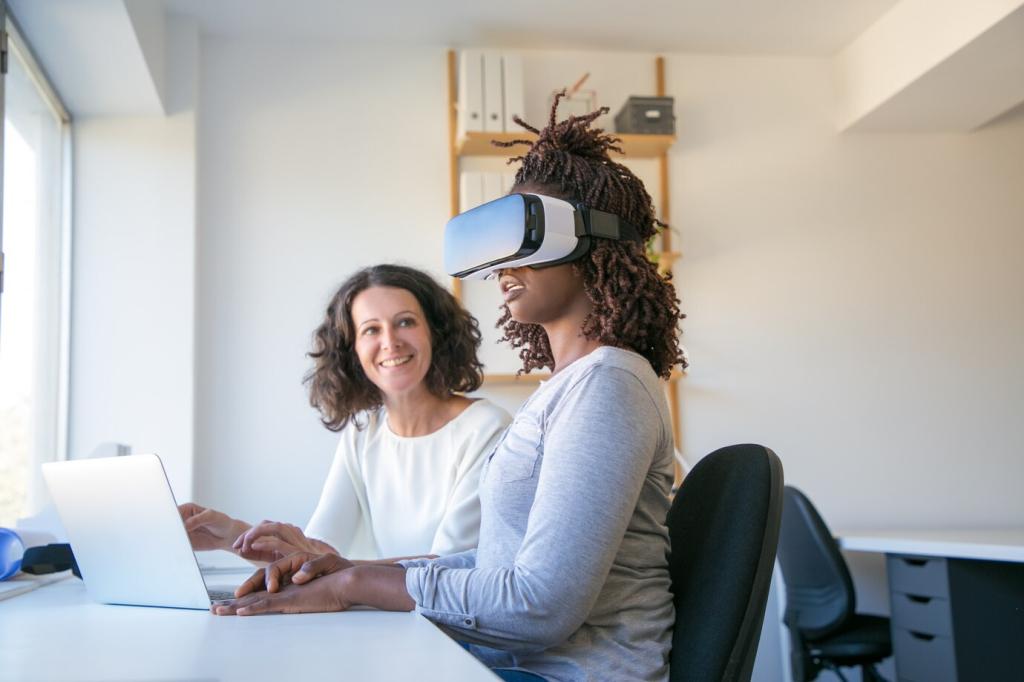
Designing for Diverse Bodies and Abilities
Support seated, standing, and room-scale play. Adjustable height, one-handed modes, and remappable inputs open doors. Provide clear posture guidance and fatigue-aware breaks. Share how you mapped complex actions to simple, repeatable gestures without excluding anyone.
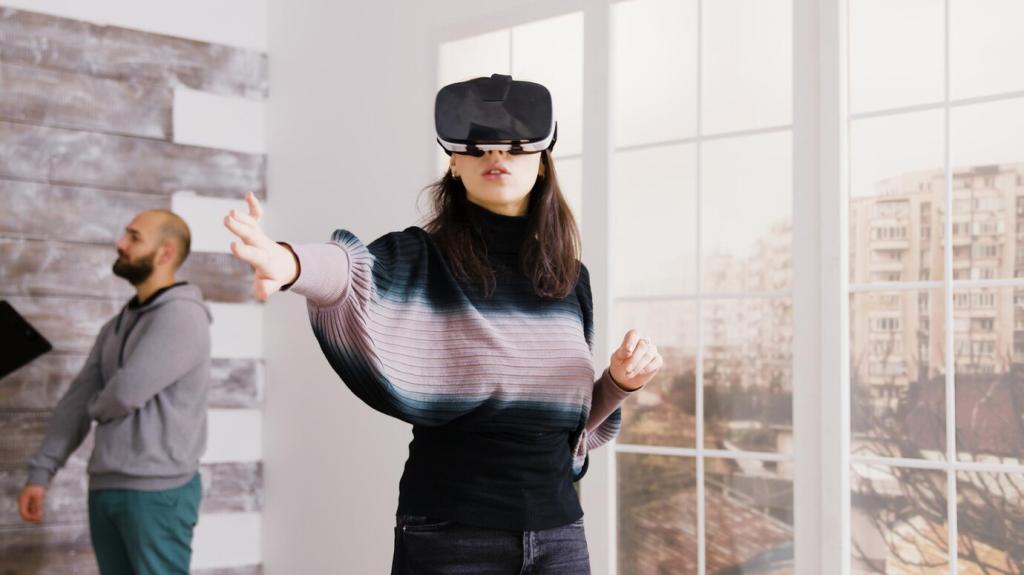
Readable Text and Contrast in 3D
World-space text needs larger sizes, stable anchoring, and high contrast against dynamic backgrounds. Offer captioning for voice, sound effect labels, and colorblind-safe palettes. What typography and anchoring strategies have kept your UI legible from every angle?
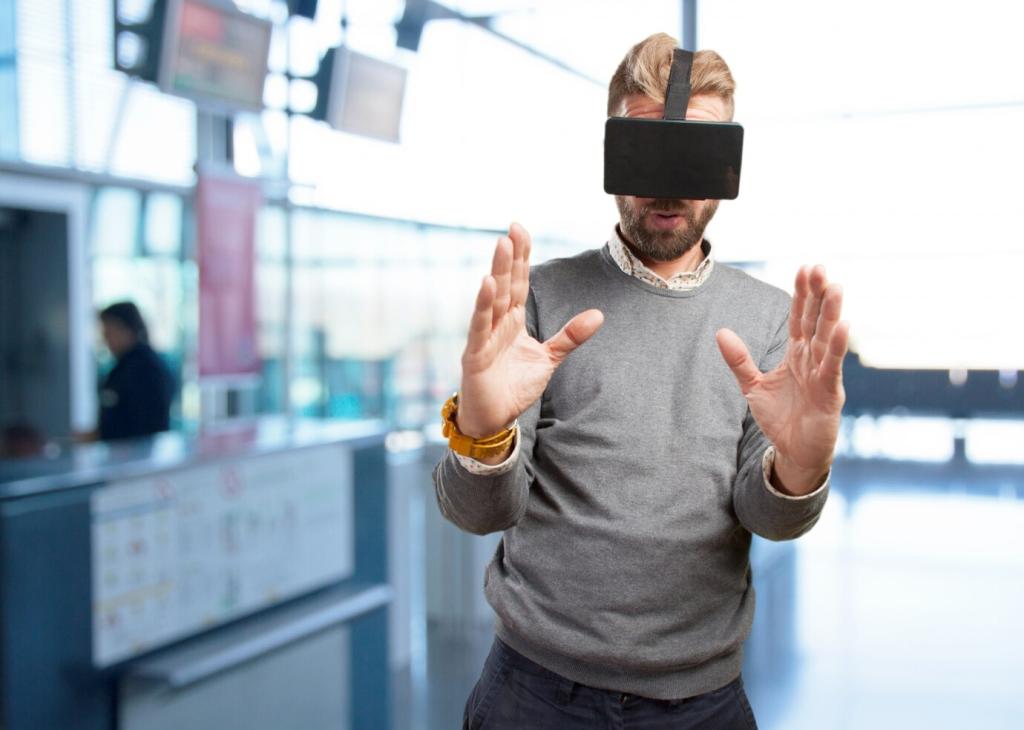
Comfort Locomotion and Visual Guards
Vignettes during movement, grounded horizons, and head-locked status bars reduce discomfort. Provide fixed foveation options and motion sensitivity sliders. Share a comfort preset that surprised you by improving both retention and user-reported enjoyment.
Test early with paper mockups, then greybox in-engine. Encourage thinking aloud, measure setup friction, and observe natural posture shifts. After each session, capture three surprises and one hypothesis to retest. What ritual keeps your team honest and curious?
